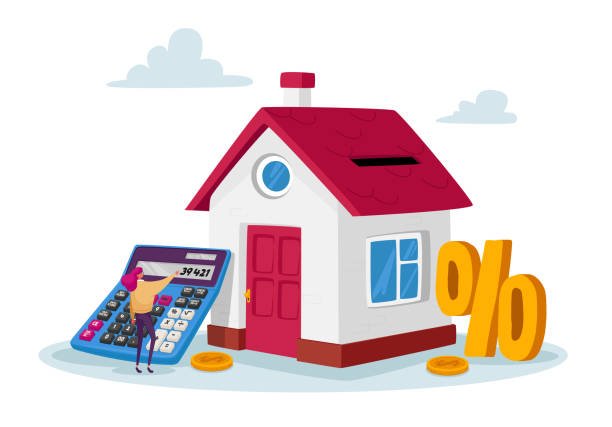Introduction
Mortgage rates play a pivotal role in the overall cost of homeownership, directly impacting monthly payments and the total amount paid over the life of a loan. For both prospective homebuyers and existing homeowners considering refinancing, understanding the factors that influence mortgage rates is essential. This comprehensive guide explores the economic, individual, and market-related factors that contribute to mortgage rate fluctuations, empowering borrowers to make informed decisions about their home financing.
Economic Factors Impacting Rates
Inflation and Interest Rates
One of the primary economic factors influencing mortgage rates is inflation. When inflation is high, central banks often raise interest rates to control it. As interest rates increase, so do mortgage rates. Conversely, during periods of low inflation, central banks may lower interest rates, leading to more favorable mortgage rates for borrowers.
Economic Indicators
Various economic indicators play a role in shaping mortgage rates. These indicators include:
- Gross Domestic Product (GDP): A strong and growing economy often leads to higher mortgage rates as demand for borrowing increases.
- Employment Rates: Low unemployment rates indicate a robust economy, potentially leading to higher mortgage rates.
- Consumer Price Index (CPI): The CPI measures the average change over time in the prices paid by consumers for goods and services. Central banks use this data to gauge inflation, influencing their decisions on interest rates.
- Federal Reserve Policies: The Federal Reserve, through its monetary policies, influences short-term interest rates. Changes in these rates can have a cascading effect on longer-term mortgage rates.
Understanding these economic indicators provides borrowers with insights into the broader economic landscape and potential trends in mortgage rates.
Credit Scores and Interest Rates
The Relationship Between Credit Scores and Rates
Individual creditworthiness is a significant factor in determining the interest rate a borrower receives. Lenders use credit scores, generated by credit reporting agencies, to assess a borrower’s risk. Higher credit scores indicate a lower risk of default, resulting in more favorable interest rates.
Strategies for Improving Creditworthiness
- Timely Payments: Consistently making on-time payments on existing debts positively impacts credit scores. Payment history is a crucial aspect of creditworthiness.
- Reducing Outstanding Balances: Paying down credit card balances and other outstanding debts can improve credit utilization ratios, positively influencing credit scores.
- Addressing Errors on Credit Reports: Regularly reviewing credit reports helps identify and address any errors that may be negatively impacting credit scores. Disputing and correcting these errors is crucial for accurate credit reporting.
- Avoiding New Debt: Taking on new debt shortly before applying for a mortgage can negatively affect credit scores. It’s advisable to avoid opening new credit accounts during the homebuying process.
Understanding the relationship between credit scores and interest rates empowers borrowers to take proactive steps to improve their creditworthiness and secure more favorable mortgage terms.
Loan Term and Interest Rates
Short-Term vs. Long-Term Mortgages
The term of a mortgage, referring to the duration over which it is repaid, is a critical factor influencing interest rates. Mortgages typically come in 15-year and 30-year terms, with variations in between. Shorter-term mortgages often have lower interest rates but higher monthly payments, while longer-term mortgages may have higher interest rates but lower monthly payments.
Factors Influencing Loan Term and Rates
- Risk Perception: Lenders perceive shorter-term mortgages as less risky, leading to lower interest rates. The shorter repayment period reduces the lender’s exposure to potential economic changes and borrower circumstances.
- Market Conditions: The overall economic and market conditions can influence the spread between short-term and long-term interest rates. In certain economic environments, the yield curve may steepen or flatten, impacting the relationship between short-term and long-term rates.
Understanding the trade-offs between short-term and long-term mortgages allows borrowers to choose a loan term that aligns with their financial goals and risk tolerance.
Market Conditions and Mortgage Rates
Supply and Demand Dynamics
The basic principles of supply and demand also apply to the mortgage market. When demand for mortgages is high, lenders may increase interest rates. Conversely, when demand is low, lenders may lower rates to attract borrowers. Market conditions, influenced by economic factors and borrower demand, play a crucial role in determining the prevailing mortgage rates.
Secondary Mortgage Market
Mortgages are often bundled together and sold as mortgage-backed securities in the secondary market. The demand for these securities can influence mortgage rates. Factors such as investor sentiment, economic indicators, and government policies can impact the secondary market and, consequently, mortgage rates.
Global Economic Factors
In an interconnected global economy, events and conditions in other countries can also influence mortgage rates. Global economic uncertainties or crises may lead to increased demand for safe-haven assets, including U.S. Treasury bonds. As bond prices rise, yields (interest rates) tend to fall, influencing mortgage rates.
Timing the Market
Seasonal and Cyclical Trends
Mortgage rates can exhibit seasonal and cyclical trends. Historically, rates may be lower during certain times of the year or during economic cycles. Understanding these trends can help borrowers time their mortgage applications to secure more favorable rates.
Economic Indicators and Timing
Monitoring economic indicators, such as employment reports, inflation data, and central bank statements, provides insights into potential changes in interest rates. By staying informed about economic conditions, borrowers can make informed decisions about when to lock in a mortgage rate.
Rate Lock Strategies
When borrowers find a favorable interest rate, they have the option to “lock in” that rate for a specified period. This protects borrowers from potential rate increases while their mortgage application is processed. However, rate lock periods are finite, so borrowers need to finalize their mortgage before the lock expires.
Understanding the timing considerations in the mortgage market empowers borrowers to make strategic decisions about when to apply for a mortgage and when to lock in an interest rate.
Conclusion
Navigating the intricacies of mortgage rates requires a comprehensive understanding of the economic, individual, and market-related factors that influence them. From economic indicators and credit scores to loan terms, market conditions, and timing considerations, each factor plays a role in shaping the interest rates borrowers encounter.
In the next part of this guide, we will delve deeper into practical considerations for borrowers, including strategies for securing favorable mortgage rates, the impact of rate changes on monthly payments, and how to adapt to evolving market conditions. Armed with this knowledge, borrowers can approach the mortgage process with confidence and make informed decisions that align with their financial objectives.v



